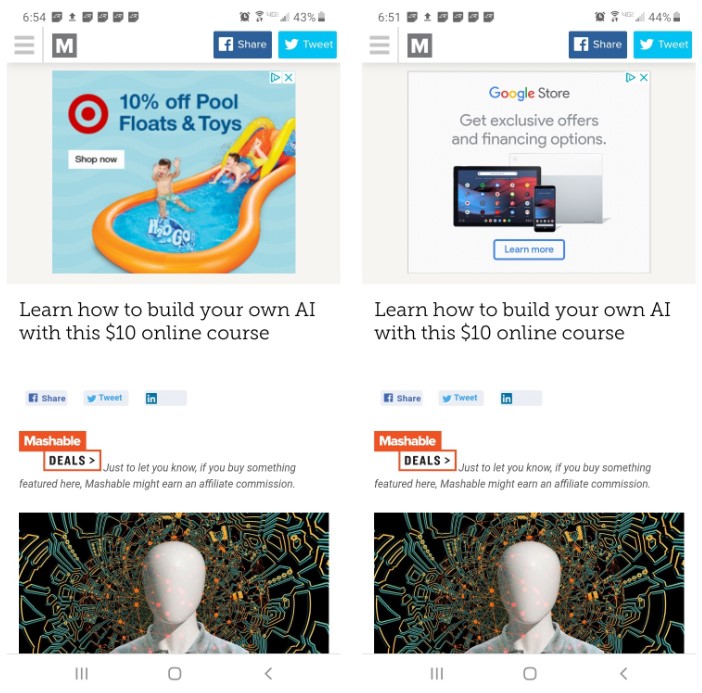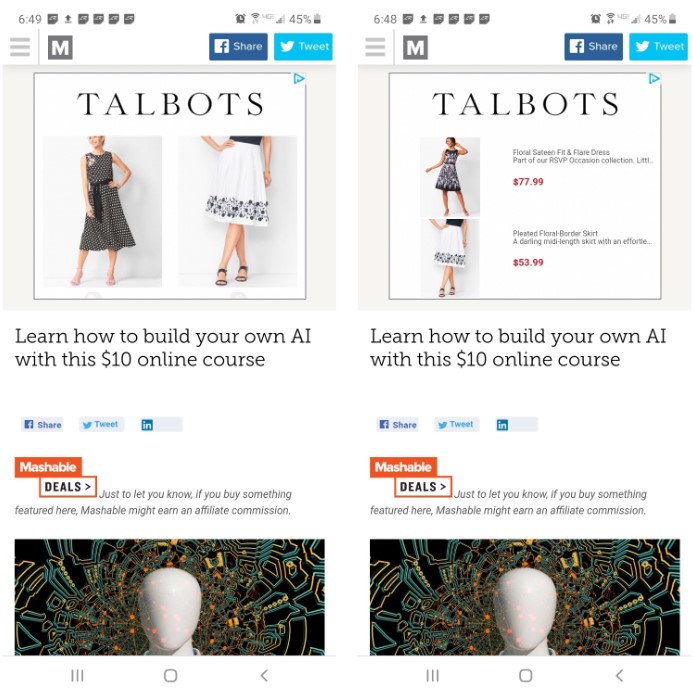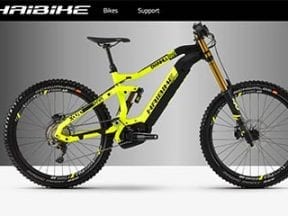Retargeting turns visitor actions on your site or app into a second chance to capture a sale. It’s an excellent way to move top-of-funnel traffic from organic search to conversions.
Consider the display ads below. Both appeared on Mashable to visitors of Target.com and the Google Store. This is retargeting — also known as “remarketing.” It’s a way to get your brand in front of shoppers who have had interactions on your site or your mobile app, driving increased awareness and conversion.

Retargeting ads from Target and Google Store on the same Mashable article.
Critics claim remarketing is creepy. After all, the ads follow you from site to site as you surf the internet. But it makes sense as a search engine optimization strategy.
One of the complaints about SEO is that it drives a lot of visits but not many sales. Ranking well on search results increases your visibility and drives awareness of your brand, but it can convert less than other channels.
Moreover, it’s often difficult to calculate return on investment from SEO given the typical purchase journey of modern shoppers.
Retargeting can improve conversions — and thus ROI — from SEO.
Abandoned Carts
It happens too often: You win the shopper’s click from Google’s search results, only to lose the sale when she abandons her cart.
Maybe she was window-shopping. Or she was called away to deal with something important. Or closed her browser accidentally. Whatever the reason, you lost the sale.
But you know she wanted something specific.
To combat this, ecommerce sites target shoppers individually after they abandon carts.
The ads below contain items in my shopping cart at Talbots. The ads tempt me to go back and complete my purchase. It might seem annoying, but I don’t mind because it’s keeping me in touch with things that Talbots knows I want. It’s providing value.

Talbots uses multiple ad formats to target shoppers and minimize banner blindness. The ad on the right includes red sale prices, which increases the likelihood of a purchase.
Talbots captures what it knows about shoppers to nudge them in a direction they already want to go.
Information Seekers
Here’s another scenario: You created a compelling blog post to increase organic search traffic to your site — and it worked! But visitors read only that post. They didn’t click deeper into the site, didn’t buy anything, didn’t even subscribe to your email newsletter.
Those one-and-done informational visitors can be converted to customers with patient retargeting.
Missed Pages
Sometimes shoppers don’t take the paths we want. This is especially true of visitors from organic search results. They could land on any page. They could miss critical sale-event pages or leading products or categories.
Those shoppers are more likely to visit again if you show them the most engaging pages on your site.
Competitors
Do your competitors have better rankings in organic search, a bigger ad budget, or a more popular brand?
Retargeting can help. Not only can you target people who have been to your site, but those who also search for the brand names of your competitors or suppliers. This combination targets consumers exposed to your brand who are comparison-shopping. It tempts them to come back.




